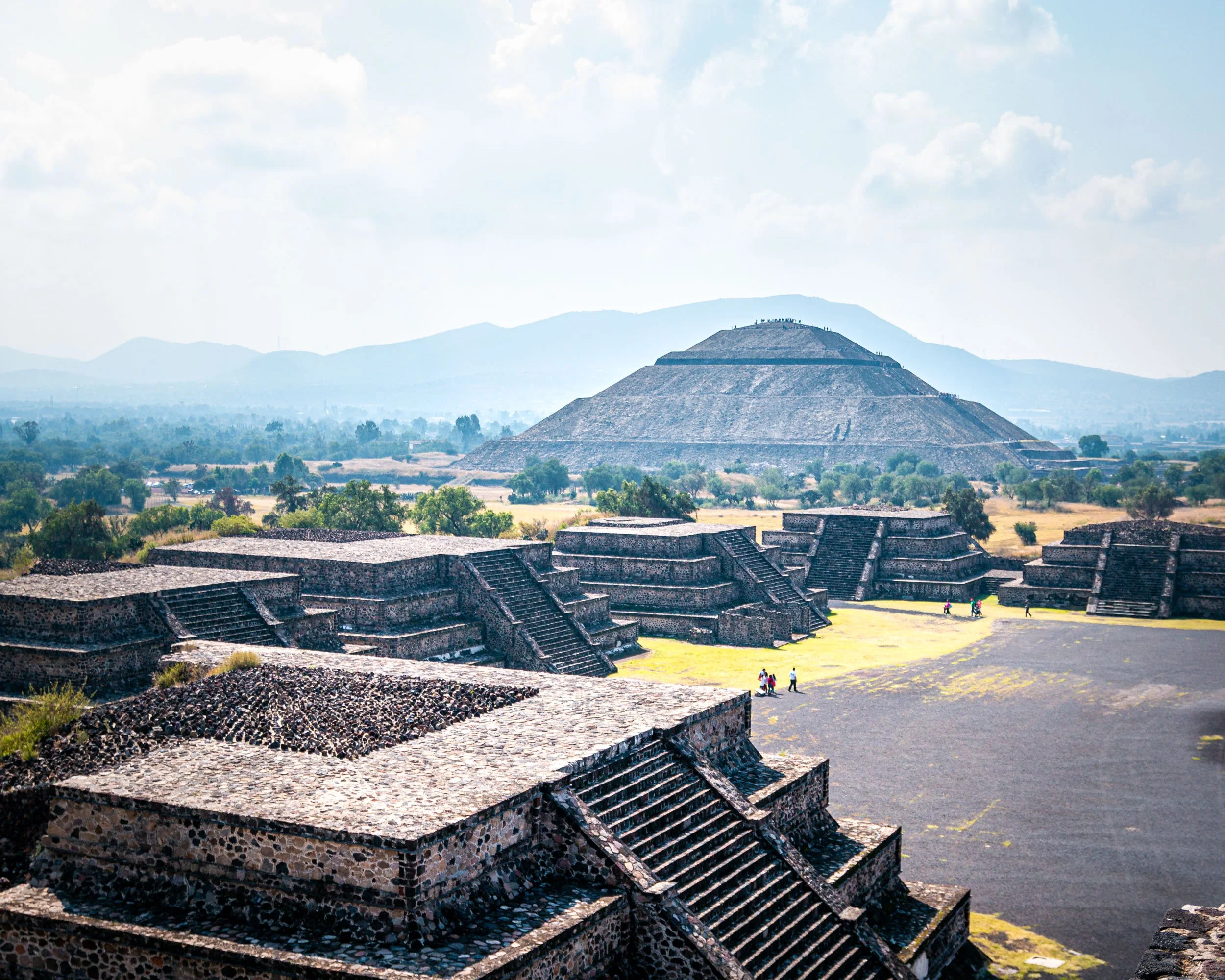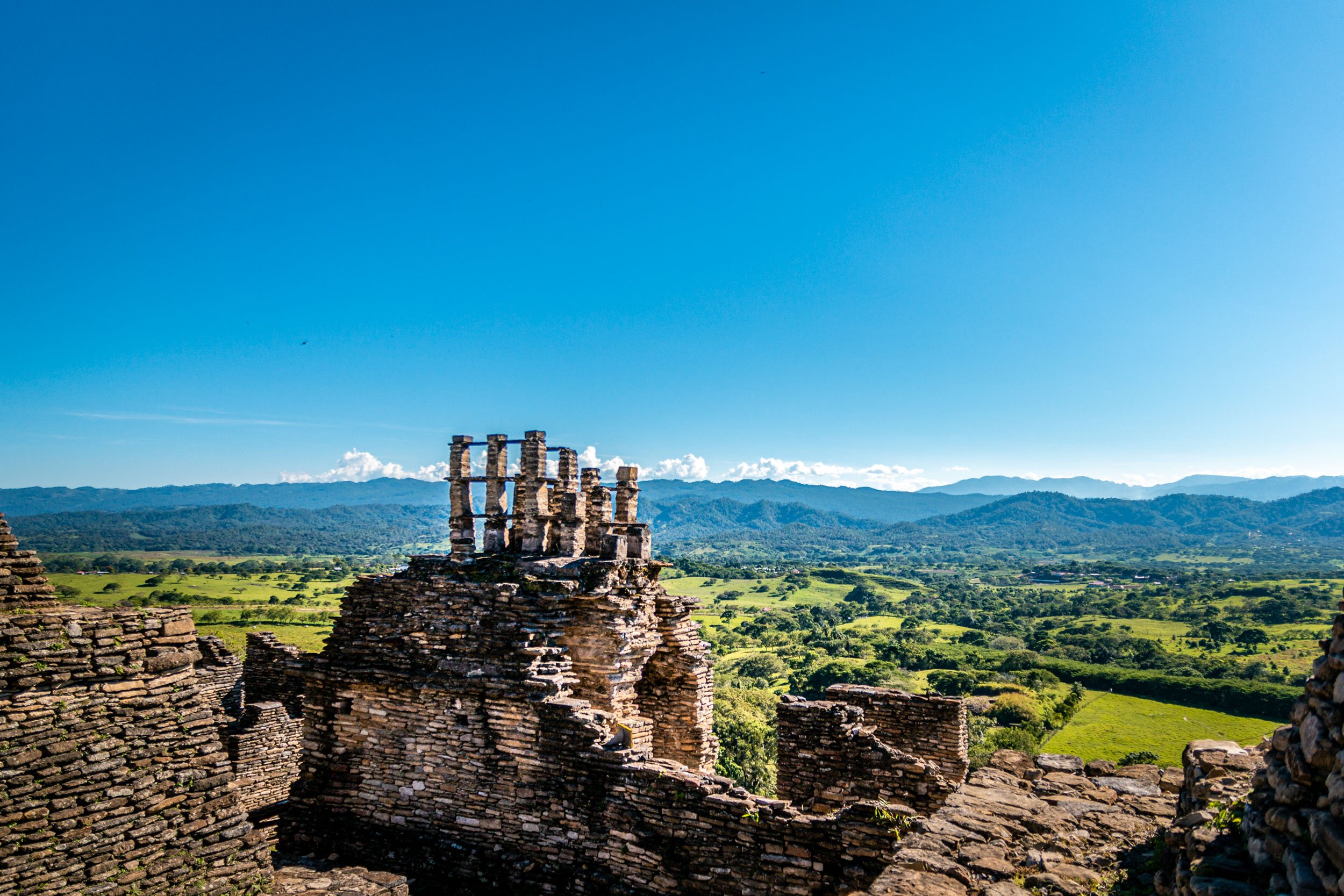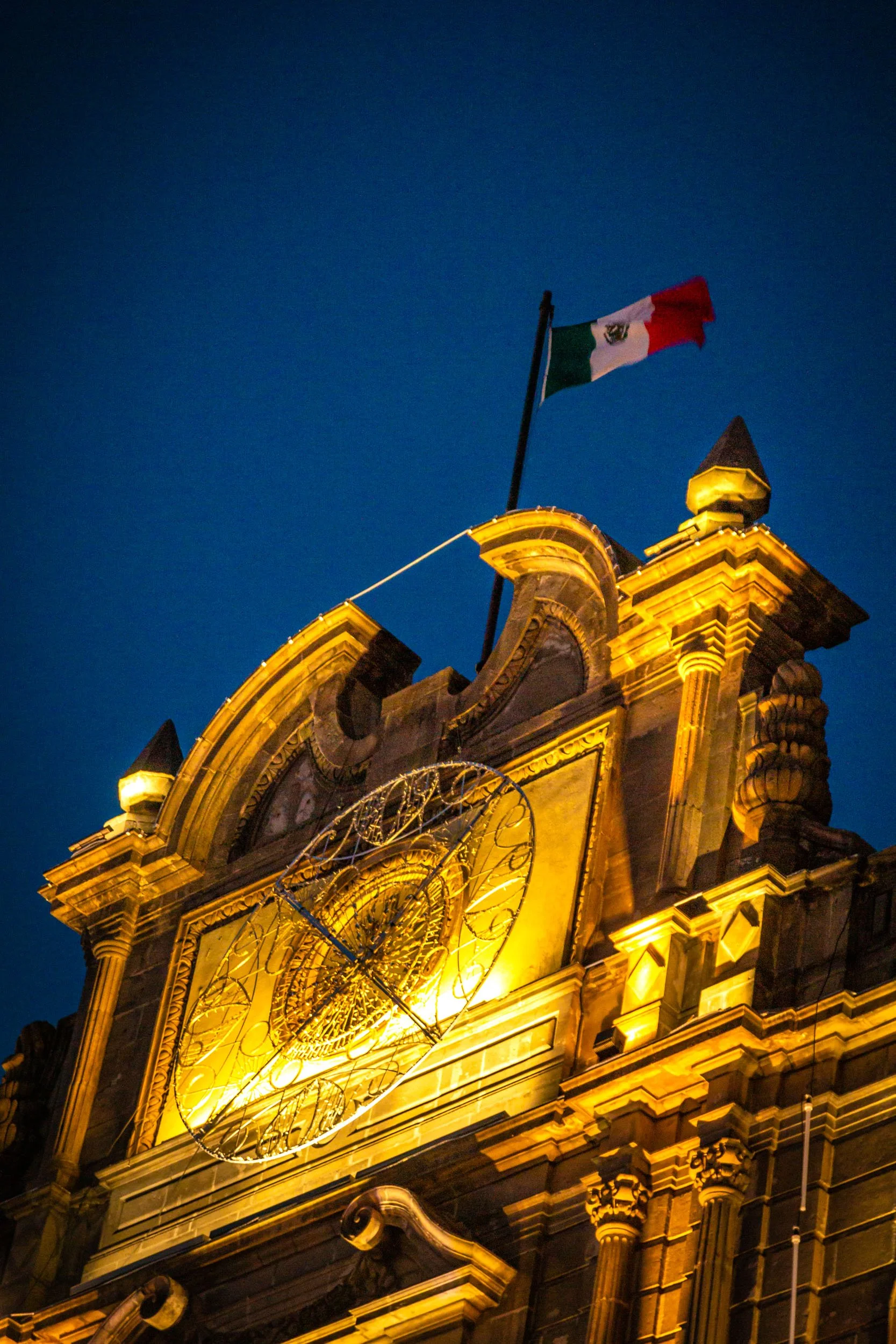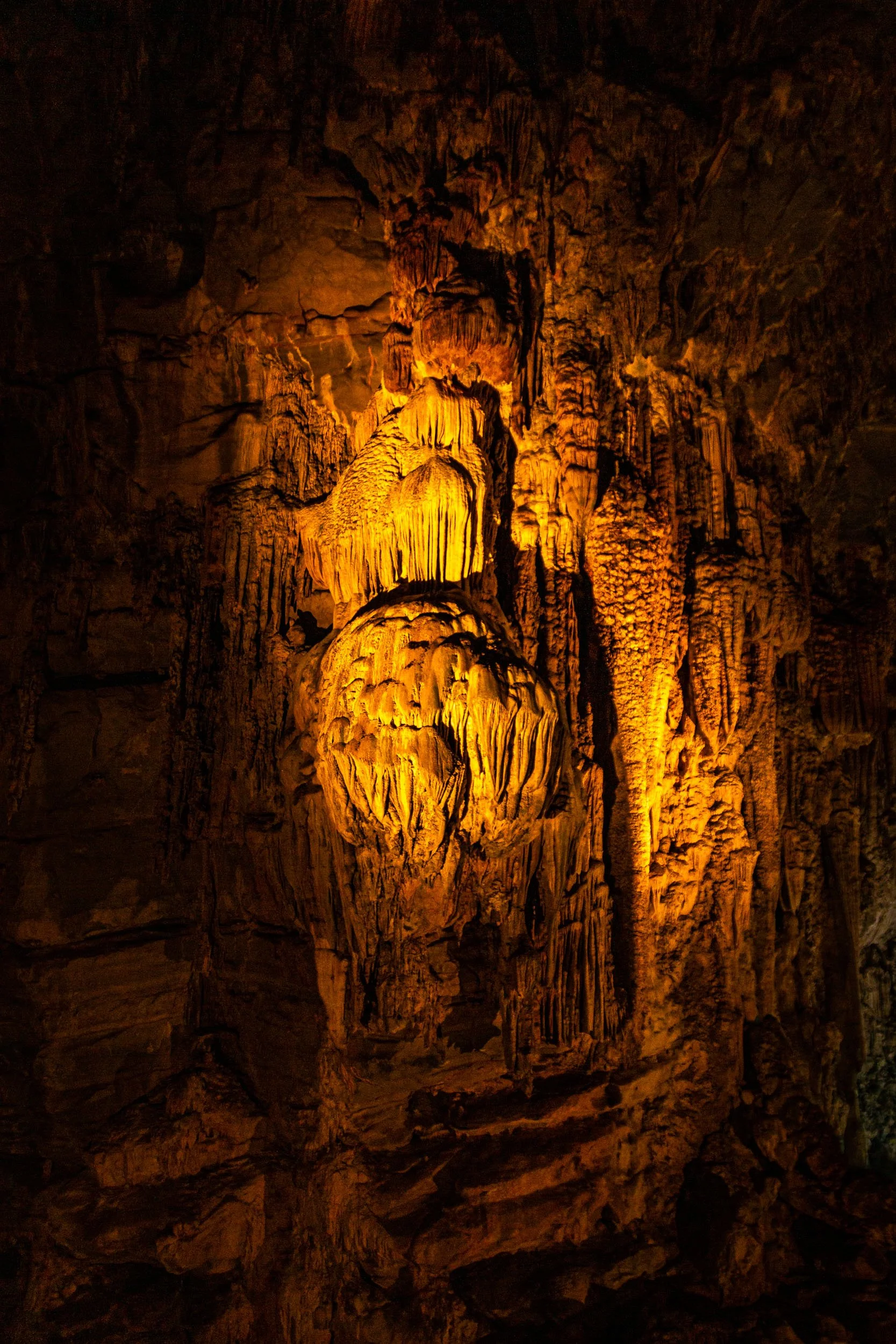
Mexico
We could have flown into the Yucatan Peninsula directly, but we decided to go to Mexico City instead as there were some sights that were somewhere in-between the capital and the peninsula, such as Teotihuacan or Tula, and it probably was also way cheaper to do it like that instead of going to Cancun and book a car there.
We did not speak a lot of Spanish, but it felt a bit easier (not much though, surprisingly) to communicate than it was in Argentina or Chile in 2013. Having seen all of those Narcos TV shows makes you wonder about safety, so we researched that the peninsula is one of the safest areas in Mexico and apart from the history and beauty of it, that was a reason why we chose this location for a trip. We weren’t wrong and we didn’t have any instances where it was dangerous or the like, but we did have some where we got a bit sceptical and one event where we didn’t know what would happen, but more on that later. Also, when we walked around Mexico City, especially in the historic centre, there was police at every corner, so there’s that.
There were also many moments that were kind of crazy, interesting, funny or all of them together, and I’ll add a list of some of them at the end. But let’s start from the beginning.
In 2014 I visited the Yucatan Peninsula in Mexico. We flew into Mexico City and after a day of walking around the city, we took our rental car to drive to the peninsula and back, with a few stops along the way.
Details
Visit: November 13th - 30th 2014
Season: Autumn (End of Hurricane Season)
Start / End: Mexico City
Transport: Rental Car
Top 5 places / experiences
-

Tulum
-

Chichen Itza
-

Sumidero Canyon
-

Teotihuacán
-

Agua Azul
Mexico City
We flew into Mexico City in the evening, so all we did is check in the hotel and get a good night sleep. The next we spent walking around the capital for the whole day. I think it was 20km in the end as we did not use any transport vehicle other than our feet.
Of course, we walked into the Centro Historico and visited the famous Zocalo and the National Palace, the Templo Mayor, Palacio Nacional, Catedral Metropolitana and the Plaza Tolsa.
We also visited some other areas like Alameda and the Palacio de Bellas Artes, the Plaza de la Republica and the Monumento a la Revolucion, as well as Mexicos largest park Bosque de Chapultepec. Last but least, we walked to the statue El Ángel de la Independencia which reminded me of the Berlin Victory Column.
Going to the Peninsula via Veracruz and Tabasco
The next day we first drove to the archeological site of Teotihuacan which is one of the most spectacular pre-Hispanic sights in mexico and one of the biggest north of Mexico City. There is a couple of beautiful pyramids that you can hike up to, and we went up both the Piramide del Sol (Pyramid of the Sun), which is 224m by 220m big and 65 meters tall, and the Piramide de la Luna (Pyramid of the Moon), which is 147m by 130m big and 43m tall. It may not sound like it, but it was extremely exhausting to climb these pyramids in the middle of the day with no shade and about 40 degrees celcius. But the view over the site was just amazing so it was totally worth it to climb up both pyramids.
Next stop: the archeological site of Tula. It’s not too far from Teotihuacan, so it makes sense to combine the both. Also, it’s an impressive site, but if you can only choose to visit one of them, I would not go to Tula.
After walking around the site and we made our way to the hotel almost 2 hours east from the site, so we wouldn’t have to drive as much the next day. However, we wanted to make sure to arrive when it’s still bright outside as we have read about many potholes on the roads and it wasn’t advised to drive in the dark. Spoiler alert: There were a lot of potholes and I also would advise to not drive in the dark if you don’t have to.
The next two days were very driving focused, but we did start with one the highlights of the trip, which was El Tajin. It’s a pre-Columbian archeological site and one of the largest and most important cities of the Classic era of Mesoamerica. And it was huge indeed. You could easily spent hours there exploring the different pyramids and buildings, but we did not have that much time unfortunately, though it felt like we spent enough time there to leave with a good feeling. The city flourished from 600 to 1200 CE, but fell in 1230. Took another 500 years until it was found in 1785, and in 1992 it became a Unesco World Heritage. The most important and known monument is the Pyramid of the Niches which you can also see in the photos.
We had two more sights on our list, but unfortunately driving took longer than expected so number 2 was already closing when we got there, and we couldn’t even find the third site. So we continued driving to our hotel in Veracruz, and the next day to Villahermosa. We stopped along the way to take some photos, but did not visit any specific sight. Also, there was a lot of traffic and roadworks, and due to that we ended up driving in the dark the last bit which we didn’t want in the first place. And I know why we didn’t: roadworks without warnings, crossings on the motorway, dangerous exits, dangerous cars that had no lights, potholes, and motorbikes driving in the wrong direction on the shoulder lane, to name a few.
We were pretty happy when we arrived in Villahermosa, and when we got there we walked around the town and it’s beautiful Plaza de Armas. It rained a ton over night and when we left the next morning, we had to navigate through flooded streets, and the rain didn’t really stop until we reached our next destination Campeche. The drive wasn’t as easy, either, as there was some kind of demonstration blocking the street around 100km before Campeche. Took us another 2 hours extra, so we arrived late in Campeche and could only walk around in the dark. Beautiful town though from what we could see.
Western Part of Yucatán Peninsula
Back to archeological sites, finally! First stop: Edzna. This is a Maya archaeological site close to Campeche. The whole site is 25 km² big with many temples and buildings, but the most impressive sight is the Plaza Principal where you’ll find most of the monuments, and the Gran acrópolis, which is raised platform holding several structures, including the impressive five story pyramid Temple of Five Stories (Edificio de los Cinco Pisos) which you can actually hike up to the top.
We then visited the Grutas de Loltun, one of the largest dry-cave systems on the Yucatán Peninsula. Apparently, there were a lot of murals on the walls, of faces, hands or animals, but tourists touching them in the last decades have almost made all of them unrecognisable. There has been some restorations though. Still an impressive cave! We almost had a private tour in English together with 2 french people, and you must know and will be reminded that you’re expected to give a tip to the guide, which is higher than the actual entrance fee.
Close to the cave you’ll find another archaeological site: Uxmal. We only got there 40min before closing time, but instead of not letting us in as we experienced the other day, they let us in for free. Uxmal is also a Maya site, and it was a big (up to 25 thousand people) and culturally important city once, and it’s now a UNESCO World Heritage Site. The tallest and most recognisable building is the Pyramid of the Magician, and another impressive structure is the Governor's Palace, which covers an area of more than 1,200 square meters. It was also interesting to see that this site had some kind of professional tourism shops, which we didn’t see at any other site before.
We continued to our hotel in Merida and walked around a bit (looked like a beautiful city) before we headed to dinner and called it a day.
The next day we drove to the caribbean coast of the peninsula. But before we did that, we had to visit the most famous archeological site of Mexico: Chichén Itzá. And it’s the best restored site as well. And the most crowded (more than one or two million visitors a year). They even build a new road for people flying to Cancun and visiting Chichén Itzá for a day trip, so they won’t see the roads that we saw when we drove along the coast of the Gulf of Mexico.
It is still a very impressive site, I won’t lie, and everyone in the area should go see it. Of course, it’s also a World Heritage, and it’s been voted to be one of the new 7 Wonders of the World. The most famous building is the Temple of Kukulcán (El Castillo) which dominates the centre of the archeological site. It’s 30m high and has 365 steps in total if you count all 4 sites together.
Eastern Part of Yucatán Peninsula
Next we drove to Cancun, or better to say: we wanted to drive to Cancun. A credit card wasn’t working when we stopped for gas, so we paid cash. Then we paid cash for Chichén Itzá as well, and when we wanted to continue to Cancun, we suddenly saw a toll station. We knew we didn’t have enough cash on hand, so we stopped before the station and went through our luggage to find some. Fortunately, I saved some in a hidden spot because I collect a little bit of cash from every country I visit, and Mexico was no different. It was enough, so we were able to continue to Cancun, had some coffee there and walked at the beach for a bit before we drove further to Playa del Carmen, our final destination for the day.
As beautiful the beach and the town might be, I wouldn’t be looking forward to come back to be honest, as it is a very touristy place with lots of people on the main street wanting to sell you stuff. And not just souvenirs, I’m talking sex & all kinds of drugs, not sure about Rock’n roll though.
Even more interesting was the Bed & Breakfast we booked, which seemed more like a room in an illegal AirBnB, because there was no sign anywhere and nobody in the neighbourhood, including actual neighbours, knew about a B&B. After meeting the owner and seeing the place, we knew we would leave as soon as possible.
So we started the next day with sunrise the beach of Playa del Carmen. I wasn’t much of a sunrise person at the time, so it was pretty hard for me to get up this early, but it was totally worth it. It was a beautiful sunrise and I’m happy with the photos, but I wish I would have know more about beach photo composition back then. I also took the chance to go for a quick swim for the first time on this trip. Water temperate was really nice, but I really wanted some coffee and breakfast, so we didn’t stay long.
After breakfast we drove to one of the most famous places of all Mexico: Tulum. For a good reason! It’s one of the best-preserved coastal Maya sites, and it’s located directly at the Caribbean sea on top of 12 meter tall cliffs, surrounded by beautiful beaches and palm trees. Everyone has probably seen a photo of the Temple of the God of Wind with a beautiful beach in front of it, overlooking the ocean. The site itself is quite big, and you can walk around for quite a bit.
Unfortunately, we had spent too much time at Tulum, and we decided to skip Sian Ka'an Biosphere Reserve and go to the Laguna Bacalar directly, though we didn’t have enough time to go for a boat trip or something like that either, so we didn’t spent much time and left for Chetumal quickly, where we booked the hotel for the night.
We arrived in Chetumal just in time for sunset, but not early enough to go to the beach. Instead, we enjoyed the roof top pool of the hotel we booked, which was pretty nice, too.
Coast to Coast
It was time to slowly go back to Mexico City, but we still had a few days to make a few stops. The next two days would consist of a lot of driving though, as we drove from the Caribbean to the Pacific coast of Mexico, from Chetumal to Salina Cruz with a stop in Palenque in between.
The drive to Palenque was about 500km and the roads were surprisingly good, so we decided to not go to some of the smaller Mayan archaeological sites on the way but rather try to go to the ones in Palenque instead. We arrived at 4:15, so we thought we have 45min to explore, but the guides were trying to get us out at 4:45pm already which was a bit of a bummer, but at least we got in for free again.
The site is also a UNESCO World Heritage and known as the „Pre-Hispanic City and National Park of Palenque“. The park was opened in 1981 and it’s almost 18 square kilometres big. It’s been well restored after it was left at about 799 AD and got overgrown by the jungle, and it has a few very impressive and beautiful buildings, like the The Temple of the Skull, the Temple of Inscriptions, the Temple of the Red Queen and of course the Palace with its Observation Tower. In total, there’s hundreds of ruins to be found in the area, but only a small number is actually accessible. It’s always fascinating to see these ruins, especially if they are in good shape and as big as in Palenque. Especially, if you think about that these were built without metal tools or support from animals or the wheel.
For a change, the next day we visited something different from ancient ruins: waterfalls!
We started with Misol-Ha, a 35 meter tall waterfall 20km outside of Palenque. It cascades into a wide pool where you can swim in, and it’s surrounded by tropical vegetation. Just beautiful. And that’s not all. There is a path leading to a cave (ca. 20m in length) behind the waterfall.
A bit different but not any less impressive are the Cascadas de Agua Azul. These are a number of different waterfalls (up to 6m) that flow into one another as well as into beautiful turquoise pools, which literary scream for taking a swim there. You have to be careful, though, as the flow can get dangerous and people drowned here because of that. It’s beautiful no matter if you go swimming or not.
Another 2hour drive led us to yet another Mayan archeological site: Toniná. Toniná means house of stone and it is a relatively large site that was occupied between 400 and 900 AD. One of the massive structures here is the Acropolis of Toniná, which is with 74 meters one of the highest pyramids in Mexico and taller than the Pyramid of the Sun which we climbed in Teotihuacan, so of course we had to climb this one too. Pretty exhausting again with over 30 degrees Celsius and no clouds in the sky, but the view was again pretty much worth it.
Initially, we had planned to visit San Cristobal de las Casas afterwards, but everything, including driving, took longer than expected, so we drove directly to our hotel in Tuxtla Gutiérrez.
Talking about driving longer than expected, we were stopped a few times in the last days by people or kids wanting to sell us stuff or just begging for money. Usually this would happen in the villages you pass, around the speed bumps that are everywhere and make you slow down enough, but we’ve also experienced kids that were holding a rope as high as the car and when you stopped down other kids were coming to the car, trying to hold on to it until you gave them money. We did, and they left.
In Tuxtla Gutiérrez we booked tickets for a boat trip through the Canon del Sumidero, which is highly recommended to see how impressive this canyon is. The trip took about 2 hours, we had great sunny weather and even saw some crocodiles. There are also some waterfalls and the cliffs are as high as 1000 meters. The only downside was that we had to wait a bit as there wasn’t any trip available earlier that day. As it was a bit later than we hoped, we continued to our next destination, Salina Cruz, which was a 5,5hr drive due to traffic and road conditions.
From Salina Cruz to Puebla
Beach day! We drove along the coast from Salina Cruz to Puerto Escondito and stopped at every beach we could. Okay, maybe not every beach, but a few ones, e.g. Playa Panteón in Puerto Ángel, Playa Mermejita and Playa Cometa close to Mazunte, and of course Playa Zicatela in Puerto Escondito. I’m not much of a beach person, but after long drives and lots of sightseeing, I don’t mind a day off. Playa Mermejita was my favourite, as it was the one most secluded and we had it all to ourselves. Playa Zicatela is a great place to hang out and visit cafes and restaurants in between.
Our next stop was Oaxaca, so we had a full day of driving ahead of us. It took us over 6 hours, so we didn’t make it in time to visit the archaeological site of Monte Albán. Instead we walked around the city for a while and did some classic sightseeing, and it’s a really nice city. But it was cold! Only 17 degrees when we arrived, going down to 7 in the night. That was a hard change for us coming from over 30 degrees at the beach.
We visited Monte Albán the next morning. It’s an impressive and large site that lies on top of a mountain at almost 2000m of elevation. Monte Albán was also an important Zapotec city for almost 1000 years after being founded at around 500 BC, and one of the earliest cities of Mesoamerica. There is a huge Ballgame court to see, and you’ll get great view from the top of the North Platform.
We then headed to our next destination: Puebla. The drive there was fine, but we did have an instance that was a bit unusual I would say. We came to a toll station that seemed to be closed or taken over by demonstrants, and masked people were running around with spray cans, spraying words at the cars. We didn’t know what was going on so we were worried about our rental car, but they left us alone. We later realised that they were demonstrating about the Iguala mass kidnapping of 43 students that were kidnapped and killed. At another toll station, there was a lot of people wanting to sell stuff again, including puppies and baseball bats. Poor puppies!
We arrived in Puebla early and did some sightseeing in the city again.
Going back to Mexico City
The next day was our last full day and we did some things we couldn’t do when we arrive 2 weeks earlier.
First, we went to the archeological site of Xochicalco which sits atop a desolate plateau and therefore offers great views. It’s another UNESCO World Heritage and its name means translated „in the house of Flowers“. Earliest occupation of the place dates back to 200 BC but the its development into an urban centre including construction of most of the buildings happened between 700 and 900 AD. Up to 20000 people could have lived here. The most famous building is The Temple of the Feathered Serpent, but there are also other step-pyramid temples, palaces and even three ball courts. Xochicalco was burned and destroyed around 900 AD.
The second sight we couldn’t visit 2 weeks earlier was the Grutas de Cacahuamilpa, one of the largest cave systems in the world. There are ninety large "salons" (only 20 are open to the public) separated by rock walls, and they are connected via a central gallery. The public part is about 2km long with salons that are 20-81 meter high. There is a lot of different interesting rock formations, and they are actually still growing as there is still groundwater that filters down into the cave system. That means some salons are wetter, some are drier. One of the drier salons is called Auditorium and is being used for events or even concerts. We were lucky to arrive 5min before the hourly tour, so we could still join it, but it was all in Spanish, so we did not understand a word during the two hour tour.
Another hour of driving and we arrived at our destination Cuernavaca, from where we went back to the airport the next day.
Some more little story snippets that felt crazy, weird, or just random or funny
The toll station to Cancun only took cash, and we were almost out of cash at the time, due to blocked credit cards. But a forgotten emergency stash saved us!
One time at a restaurant we had a tequila after dinner (nothing fancy) that was more expensive than dinner itself.
Sometimes, waiters would tell you the price including an excellent service fee they provided
Cars are sometimes occupied by more people than intended, but once it was so full a kid had to lie in the back shelf
Sometimes we were asked to take a photo with(!) people
We were asked twice at different archaeological sites to give an interview to kids for their english class. They even wanted to film it.
Stuff people wanna sell you in the villages you drive through (eg fruits, papers, snacks), mostly using speed bumps as cars have to go slow there anyway, but sometimes using ropes to slow you down completely. See the „incident“ we had with some kids described above.
We had two credit cards being blocked which usually never happens on vacation.
Driving from San Cristóbal de las Casas to Tuxtla Gutiérrez takes an hour for 60km and you’ll go down more than 1600m of evelevation.
In Puerto Escondido we were asked a few times if we wanted to join a fishing trip in the morning. We said no und always were offered weed afterwards.
The spray can experience at a toll station (see above for details)
People trying to sell puppies or baseball bats at toll stations.

























































































































